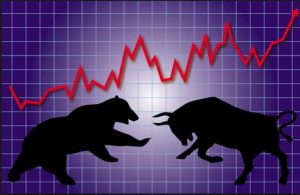
The Contrarian King: Investing Unconventionally
Updated April 30, 2024
Introduction
In the dynamic world of investing, dominated by those following the market’s pulse, a distinctive group of investors, known as contrarians, challenges the norm. These investors, epitomized by the archetype of the “Contrarian King,” pursue a strategy that starkly contrasts with conventional market behaviours.
Unlike the majority, who base investment decisions on prevailing market trends and popular sentiment, the Contrarian King adopts an unconventional approach. He astutely observes that markets are frequently driven by emotional reactions to news and events, leading to positive or negative overreactions. Instead of succumbing to these emotional tides, he critically assesses the situation and opposes the herd.
A fundamental tactic of the Contrarian King is to buy when there is widespread selling and sell during periods of widespread buying. By capitalizing on market panic that causes asset prices to drop, he acquires undervalued stocks, positioning himself to profit substantially when the market corrects itself. Conversely, during times of market euphoria, when asset prices are inflated beyond their intrinsic value, he exhibits restraint. He waits out the frenzy until normalcy returns, selling his holdings at elevated prices to lock in gains.
The Contrarian King’s prowess extends to his ability to unearth investment opportunities typically overlooked by others. He perceives potential where risk is seen and leverages uncertainty as a strategic advantage. His deep dive into meticulous research and analysis allows him to discover and invest in hidden gems that many consider too unconventional or risky.
Strategic Investing: The Contrarian King’s Approach
The Contrarian King epitomizes the essence of strategic investing, shunning the reckless impulses of gambling for a disciplined, analytical approach to the markets. The fleeting allure of market trends or the seductive promise of quick gains does not sway him. Instead, he engages in rigorous due diligence, diversifies his portfolio to mitigate risks, and meticulously plans exit strategies for each investment. His method is not unconventional for its own sake but about adhering to a philosophy that prioritizes long-term value over short-term excitement.
Investing unconventionally comes with its share of challenges, including scepticism and criticism from conventional investors who may not understand the contrarian approach. Yet, the Contrarian King remains steadfast, trusting his analysis and instincts. He knows that true contrarian investing means making decisions that are often uncomfortable but based on solid research and a clear understanding of market dynamics.
The wisdom of legendary investors like Warren Buffet, who lives a modest lifestyle despite his wealth and invests in companies with solid fundamentals, underscores the Contrarian King’s strategy. Buffet’s success from investing in overlooked companies like Geico and American Express during times when they were not fashionable highlights the potential rewards of contrarian investing. Similarly, while many rushed into overvalued tech stocks during the dot-com bubble, true contrarians recognized the unsustainable exuberance and avoided significant losses.
Benjamin Graham, another stalwart of the investment world and a mentor to Buffet, famously said, “The individual investor should act consistently as an investor and not as a speculator.” This guiding principle is a beacon for contrarian investors, emphasizing that investing is not about following the herd but about making informed, rational decisions based on thorough analysis and sound judgment.
“be wary when the crowd is joyful and happy when they are not.” Sol Palha
Unveiling the True Essence of Contrarian Investing
Contrarian investing transcends mere opposition to mainstream market trends; it embodies a deep, analytical approach that challenges the superficial allure of being different for its own sake. True contrarians, like the archetype of the “Contrarian King,” do not merely adopt contrarian positions because they appear unconventional. Instead, they thoroughly scrutinise each investment opportunity, ensuring it aligns with their well-defined investment philosophy before committing.
The allure of contrarian investing often attracts fashion contrarians—investors were drawn to going against the grain without fully understanding the complexities involved. This superficial approach can lead to misguided decisions, as seen during the dot-com bubble when the novelty of tech investments swept up many without considering the underlying business fundamentals. In contrast, seasoned contrarians like Warren Buffet remained unswayed, focusing instead on companies with solid fundamentals, thus avoiding the catastrophic losses that befell many during the bubble’s burst.
Moreover, the effectiveness of contrarian investing hinges on distinguishing valuable insights from the noise of so-called contrarian sources. Many platforms claim to offer contrarian insights but merely repackage prevailing views, adding little real value. True contrarian investing involves meticulous analysis of market conditions and investor behaviour, often drawing on behavioural finance principles and mass psychology to identify mispriced assets that others overlook.
Navigating the contrarian path requires a robust understanding of market dynamics and the courage to stand alone against popular sentiment. It’s not about seeking approval or following trends but about making informed, disciplined decisions based on a comprehensive analysis of available data. While contrarian opportunities can be lucrative, they demand a strategic approach, balancing the potential for high returns against the risks of unconventional choices. This disciplined methodology ensures that contrarian investors not only identify but also capitalize on opportunities that others miss, achieving success by truly understanding and navigating the complexities of the market.
Don’t look for investment ideas on popular sites
. If you try to get investment ideas from these sources, 9 out of 10 times, you will lose money. These sources should serve as guidelines for what investments to avoid as opposed to getting into
Do not try to be part of a group
In other words, you should be a loner when taking a position. If you seek approval from the crowds, you are most likely making the wrong decision.
Do not speculate
Contrarians do not speculate until they make money and are even careful. Only use profits to imagine and deploy small amounts of capital into speculative investments.
Do not buy the mantra of buy and hold until the end.
You will never get the special deals he gets, and he is playing with other people’s money, and you are not. There is no such thing as buy-and-hold forever. There is buy-and-save for a specific time; then you fold and re-open the position later.
Do not fall in love with your investment or get emotional over your position.
You need to be indifferent; it’s just a piece of paper. When the time comes, you close the position and move on to greener pastures.
Spotlight on Turnaround Opportunities: The Contrarian King’s Focus
Contrarian investing is about identifying and capitalizing on turnaround opportunities. These are situations where a new trend is about to begin or end. More aggressive contrarians may even short stocks and the market when the trend changes. One of the key things they look for is well-financed companies that are growing at a decent rate and that the markets are undervaluing for the wrong reasons. The masses are either ignoring these stocks or openly dislike them.
For instance, during the financial crisis of 2008, many investors were selling off their stocks in panic. However, contrarian investors saw this as a turnaround opportunity. They identified well-financed companies undervalued due to the market’s overreaction to the crisis. By investing in these companies, they achieved significant returns when the market eventually recovered.
Contrarian investing is a stable form of investing; contrarian investors do not rely on experts to help them arrive at a decision. They already know what they want, and when they spot it, they methodically start to open positions in that stock. There is no room for emotions at all. This disciplined approach is what sets contrarian investors apart from the crowd.
For example, during the dot-com bubble of the late 1990s, many investors were caught up in the hype and invested heavily in tech companies without solid fundamentals. Contrarian investors, however, stayed away from these popular stocks. Instead, they focused on undervalued companies with solid fundamentals that the market ignored. When the bubble burst, these contrarian investors were protected from the crash and profited from their undervalued investments.
Contrarian Insights and Ideas from Successful Investors
When people think of “stock picking,” they often comb through newspapers or their eTrade accounts in search of “winners.” This process typically involves reading CNN Money, picking up hot stock tips from colleagues, and guessing. Legendary investor Benjamin Graham described the stock market as a voting machine in the short run but a weighing machine in the long run.
This is because the market comprises millions of people pushing individual stock prices up and down with their buys and sells. However, Wall Street soon realized that unsophisticated retail investors are easily manipulated and found ways to exploit them. They would get access to news stories before they go public or fabricate stories themselves, then profit off the volatility they created.
According to Oaktree Capital Management’s Mr Marks, the most profitable investment actions are contrarian, which means buying when everyone else is selling or selling when everyone else is buying. This strategy can tip the risk/reward balance in the investor’s favour, but it’s important to restrict how far you’ll vary from your Strategic Asset Mix (SAM). It’s also crucial to be sceptical of new product offerings and understand how they fit into your SAM. Instead of searching for something new every RRSP season, allocate contributions to securities or funds that have lagged, which is a contrarian move. Regardless of the strategy, it must be implemented in a diversified portfolio context.
Conclusion:
The Contrarian King symbolizes the epitome of challenging the status quo in the investment world. Unlike the majority who follow prevailing market trends and popular opinions, he adopts a distinct approach, understanding that markets are often driven by emotional reactions rather than rational decisions. This insight allows him to evaluate situations and act critically, contrary to the herd mentality.
His investment philosophy is simple yet profound: buy when others are selling and sell when others are buying. This strategy allows him to capitalize on market overreactions during times of panic and acquire undervalued assets that promise significant returns upon market correction. Conversely, he exercises caution during market exuberance, recognizing that inflated asset prices often exceed their intrinsic value. He can sell at a premium by waiting for the hype to subside, securing substantial profits.
What distinguishes the Contrarian King is his knack for spotting opportunities that most perceive as too risky or unconventional. He uncovers hidden gems through meticulous research and analysis, embracing uncertainty as an ally rather than a foe. His approach is not about gambling but informed risk-taking, underpinned by a robust due diligence strategy, portfolio diversification, and stringent risk management.
Despite scepticism and criticism, the Contrarian King remains unwavering in his convictions, trusting his instincts and understanding that true contrarian investing requires the courage to withstand short-term market fluctuations for long-term gains. His success is a testament to the power of investing unconventionally, challenging us to rethink our investment strategies and consider the contrarian path not just as a mere choice but a profound financial philosophy.
Warren Buffett, a quintessential contrarian investor, famously advised, “Be fearful when others are greedy, and greedy when others are fearful.” This encapsulates the essence of contrarian investing—recognizing and acting on market inefficiencies often masked by widespread sentiment. As Benjamin Graham noted, the goal is not to follow the herd but to develop a disciplined investment strategy based on thorough analysis and sound judgment, ensuring that decisions are made with precision and foresight.
Intriguing Content to Fuel Your Mind

Flow of Funds: Contrarian Opportunities & BTC Market Insights

Long Term Trends Equates to focusing on the trend

Stock Market Euphoria or Stock Market Insanity

Volatile Stock Market
Gold Breakout Imminent: Rally on the Horizon

Tactical Investor: Archives of Past Market Updates

Navigating the Short Dow ETF: Buy, Sell, or Hold for Maximum Returns

Easy Money Environment Fosters Price manipulation

What is deflation? A bigger Problem Than Inflation

Market Opportunity: Embrace crashes like a lost love

BBC Global 30 Index Indicates Upward Trend for Dow Industrials

Russell 2000: Great Buy Signal In the making

Strong buy stocks: Follow The Trend

Dollar Strength Or Dollar Crash

Market Crash 2020: Unraveling a Manufactured Crisis
Unveiling The October 24 1929 Stock Market Crash


